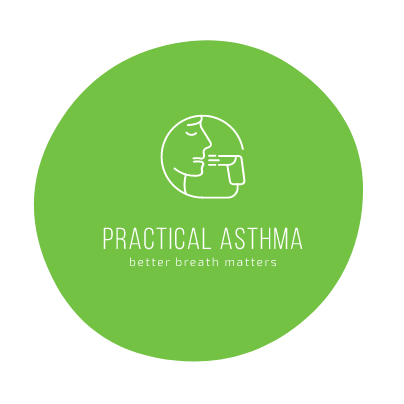Everyone Has the RIGHT to Breathe Clean Air
– Betty Bridges, RN
Airborne pollens that are invisible and often odorless can have potent effects called allergic reactions: this is a cornerstone of the the medical model of asthma and allergy. It takes no leap of faith to understand that chemicals and fragrances can cause serious effects.
Fragrances include perfumes, cleaning compounds, soaps among others. Chemicals in fragrances can range from aldehydes to solvents.
Odors do not occur by magic. A smell in our nose means that some molecules of a substance have physically reached the nasal passages. Odorants have to be in the air to be detected. They pass over special receptors in the nose and olfactory pathways provide a direct connection to the brain.
It is important to note that even odorless gases can have serious effects on some people. These substances have other properties that may trigger, exacerbate, or even cause health problems. Olfactory pathways provide a direct connection to the brain.
Fragrance chemicals can alter blood flow in the brain and cause EEG changes. Some studies suggest fragrances can act on receptors in the brain in a similar manner as alcohol and tobacco. Some fragrance materials have seditive effects. Fragrances are known triggers for migraine headaches.
Fragrance chemicals are respiratory irritants. Irritants can cause inflammation and swelling of tissues. Tissues that are irritated are more susceptible to injury, other irritants, allergens, and germs. Inflammation also can cause increased mucus production which when trapped in the sinuses or lungs can lead to infections and breathing difficulties. Irritants trigger and exacerbate asthma, allergies, sinus problems, and other respiratory disorders.
Fragrance materials add to indoor air pollution. Fragrance chemicals are volatile organic compounds or VOCs. VOCs get into the air and add to the every changing mixture of materials that are irritating and in some cases has toxic effects. Terpenes found in fragrance can cause formation of tiny particles that can be very irritating and damaging to the lungs. Poor air quality contributes to headaches, respiratory problems, eye irritation, and many other problems.
Allergies to pollen, dust mites, and molds can be tested for and treated. Allergies to chemicals occur through different mechanisms and are difficult to test for and treat. Typically chemical allergies get worse with exposures, and while medication may help some of the symptoms, they do not prevent the allergy from getting worse. If the chemical causing and triggering the allergy is in a lot of products, it is very difficult to determine which chemical is causing the problems.
For those that have allergies to chemicals in fragrances, it is extremely difficult to pinpoint the specific ingredient that is the culprit. Even if it is possible to pinpoint the specific material involved it does little good as labeling does not list the individual ingredients in the fragrance portion of the product. The only way to avoid getting sick is to avoid all scented products.
While not everyone has problems from fragrances, there are increasing numbers of people whose health is negatively impacted. This includes those with asthma, allergies, migraines, sinus problems, rhinitis, chronic lung disease, and those with Multiple Chemical Sensitivities. For many fragrances are a barrier to accessing work, social activities, and even health care.
Comments on Coping with Fragrance Sensitivity
Betty Bridges, RN
Those that suffer from severe sensitivities to fragrances often find it difficult to cope and manage. This type of sensitivity tends to be self perpetuating. The more you are around substances that cause problems the more sensitive you become. As far as I know avoidance is the only way to keep from getting ill. And that brings with it a huge amount of complications. But if you can find some way of avoiding problematic substances and give your body a chance to heal, there is a possibility that you may become less sensitive.
Dr. William Meggs’ work represents the most plausible explanation for chemical sensitivities I have found. According to Meggs there is injury to the tissues. The tissues are then more susceptable to irritants. Continued exposures to irritants increases the injury and the susceptibility to injury. This becomes a cycle where lower and lower levels of exposures cause symptoms and injury. Continued exposure and changes occur that can become permanent. If avoidance can be accomplished and the tissues have time to heal the process may be stopped.
In addition there are neuroreceptors present in various areas of the body. Inflammation and swelling produces substances that act on these receptors. These substances are circulated to other parts of the body and can act on the neuroreceptors in other areas of the body causing inflammation and swelling there. So not only does sensitivity increase but also may cause symptoms in other parts of the body.
The bottom line is that avoidance is necessary to keep from getting ill. It is difficult to completely avoid every exposure. It is also very isolating. By trying to find a workable balance, it is possible to still have a good quality of life. Make deliberate choices about what is worth an exposure and what is not. Plan activities during off peak hours to lessen exposures. Do as much as you can by phone and mail. Cultivate interests and hobbies that do not require being in crowds of people.
Everyone has to find what works for them. Listen to your body and find out what works for you.
